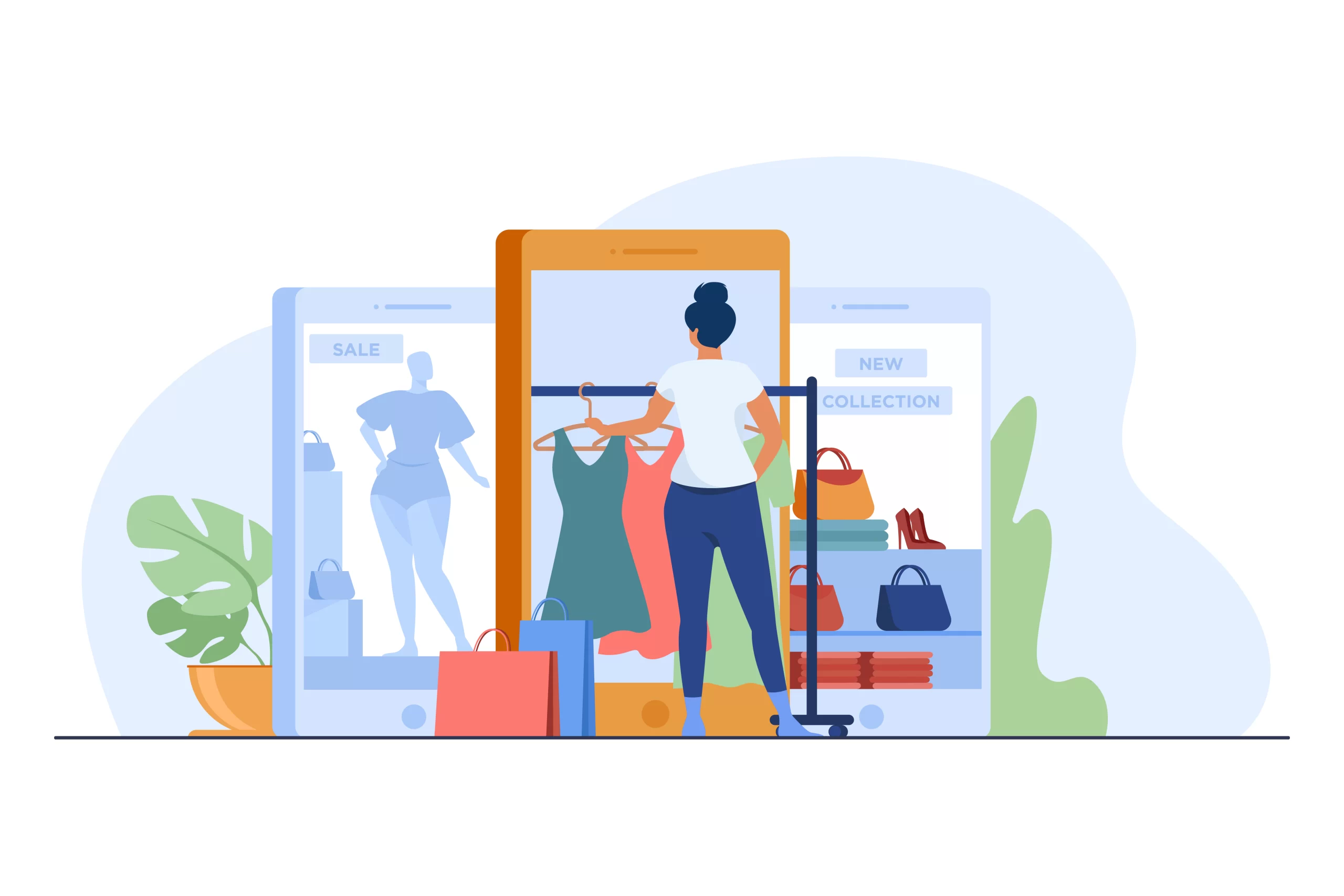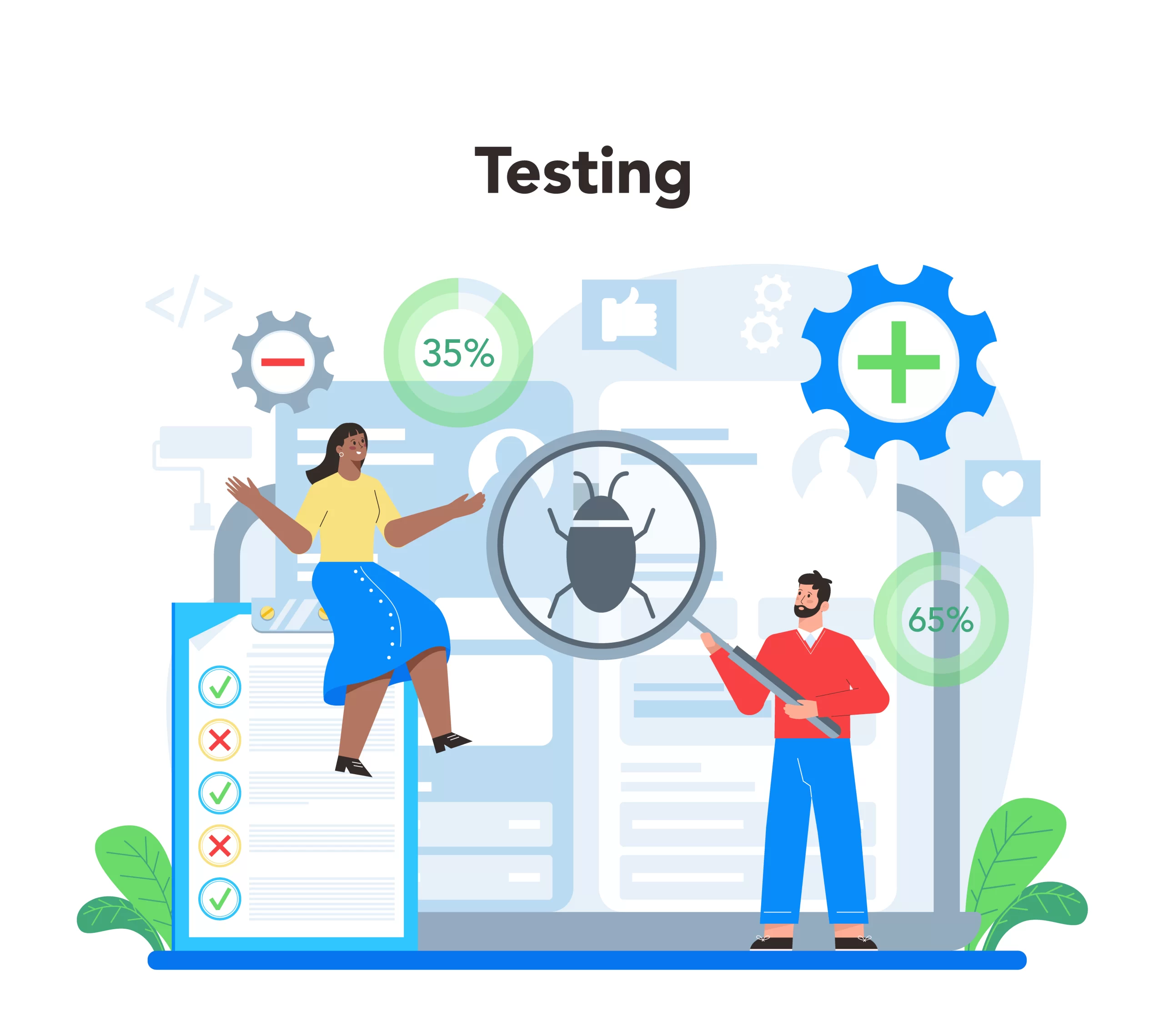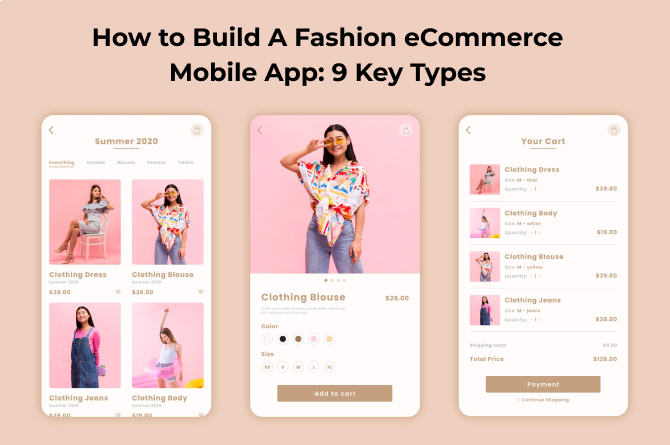Fashion is the largest B2C eCommerce market segment and its market value is calculated at US$668 billion in 2020, projected to reach US$1.2 trillion by 2025 according to statista.
The fashion sector is among the most active in the world. It evolves with the seasons and responds fast to alterations in consumer behavior, technology, and market situations. The epidemic has had a significant impact on shifting buying habits and lifestyles. Even at the height of the epidemic, when retail sales had dropped, the fashion eCommerce business rose to the occasion. Virtual fitting rooms, fast delivery, and payment choices drag online customers.
Fashion eCommerce is no longer merely a mix of online and physical retailers. It has grown to give a seamless purchasing experience across numerous media. Fast fashion brands release new collections every month, causing intense competition in the fashion sector. If you work with eCommerce enterprises, you must stay up with ever-changing trends while also ensuring that your customers have a great experience on your website.
Take this article as your absolute guide to improving your fashion eCommerce mobile app development and growing a successful business.
Types of Fashion eCommerce Mobile App Stores
1. Single Vendor Fashion Mobile App
Customers can purchase things immediately from the website or app, selecting them and paying online. This is a B2C model. In these, brands create distinct applications that are completely dedicated to their brand and sell things under their brand name.
2. Multi-vendor Fashion Mobile App
This one is similar to Amazon, Myntra, and other popular applications that contain most brands and allow anyone to establish a business by selling things under a brand name. It is a platform that unites multiple brands under a single roof. Users can enter their accounts and begin looking for products from any brand of their choice if the brand has listed their products for sale on the site.
3. Business-to-Business (B2B) Fashion Mobile App
This type of eCommerce mobile app is designed to meet the needs of businesses selling fashion products. B2B fashion apps provide a platform for wholesale transactions between fashion producers and retailers, assisting businesses in acquiring inventory and managing their supply chain efficiently.
4. Customer-to-Customer (C2C) Fashion Mobile App
C2C fashion apps allow people to buy and sell fashion items between themselves. This type of eCommerce mobile app development allows users to build profiles, list their items, and engage directly with potential customers.

5. Rental Fashion Mobile App
Rental fashion mobile apps allow users to rent garments and accessories rather than purchase them altogether. This type of software is becoming increasingly popular among people who wish to wear fancy outfits on important occasions without spending a fortune.
6. Personal Stylist Fashion Mobile App
Personal stylist fashion applications provide users with personalized styling services. Users can set up a profile, establish their preferences, and get personalized recommendations from experienced stylists.
7. Social Media Fashion Mobile App
Users of social media fashion mobile apps can browse and shop for fashion products while communicating with their friends and followers. These mobile apps include social elements like user profiles, follower counts, and social sharing, which make buying more enjoyable.
8. Flash Sale Fashion Mobile App
Flash sale fashion applications provide time-limited discounts on popular fashion items. These types of eCommerce mobile apps create a sense of urgency among customers, resulting in increased sales and engagement.
9. Fashion Super App
A great eCommerce mobile app development for fashion Business refers to a platform that provides a variety of fashion-related services and features, including shopping, styling assistance, virtual try-ons, trend forecasting, and social networking. It strives to provide consumers with a seamless experience, allowing them to meet all of their fashion-related requirements in one spot.
Fashion eCommerce: What is it?
A fashion mobile app is a software application that offers fashion-related services such as outfit recommendations, style inspiration, purchasing assistance, and social networking to fashion fans. These mobile apps are usually accessible to download on smartphones and tablets. They use a variety of characteristics, including machine learning algorithms, picture recognition, and intense reality, to create individualized fashion recommendations and experiences. Users can browse a wide choice of fashion products, build wish lists, receive notifications about sales and discounts, and interact with other fashion-conscious people using the mobile app’s social features.
Follow These 9 Steps to Build a Fashion eCommerce Mobile App Brand
Do you have any ideas regarding how to build a fashion eCommerce mobile app brand? Here are all of the steps you should take to learn the bespoke mobile app with advanced shopping capabilities.
1. Research the Market
First and foremost, choose your niche before you start developing a shopping mobile app for your company. It would be helpful if you have more than one concept when deciding on a specialty. This is where mobile app market research may help. When conducting market research, you should be able to answer all the relatable questions.
An in-depth market research of the shopping mobile app will help you uncover current gaps. It can also help to validate the mobile app. It is also critical to seek a product-market fit for the shopping cart mobile app that you intend to build.
You can also conduct a SWOT and risk analysis of the shopping mobile app market to have a complete grasp of your competitors and opportunities. This step’s outcomes include a validated shopping mobile app concept, a defined user market, and user issues.

2. Develop the Mobile Development Plan
It’s time to lay a solid basis for developing your own retail mobile app. This is where you sit and work out the general idea of a mobile app. Begin by discussing what you want to give the clients.
While developing the mobile app strategy and branding for the shopping app, you should also consider monetization options. When developing your monetization approach, you should also consider how free mobile apps make money. This will be useful while developing a shopping mobile app development.
It would be beneficial if you choose a monetization plan that best suits your retail mobile app development model and techniques.
3. Decide on the Approach for eCommerce Mobile App Development
How do you intend to create the shopping mobile app for the concept? Do you prefer native app development or cross-platform? Selecting the proper approach for developing an eCommerce mobile app development is a must.
Native Application Development
If you wish to construct an iOS or Android-specific shopping app, you can choose native development.
- Native mobile apps will employ a platform-specific technology stack to help you quickly construct a mobile application.
- This method allows mobile apps to integrate native components without losing performance.
Cross-Platform App Development
- Cross-platform mobile apps allow you to create a shopping app for several platforms without changing the interactions or interface design.
- The mobile app logic and coding will remain the same across all platforms. Slight adjustments may be required for a platform-specific experience.
Hybrid Development
- If you don’t want to waste bandwidth installing mobile apps, consider hybrid apps.
- They are mobile applications that are embedded in online services. These apps can be accessed through mobile web browsers without having to download them.
- They function similarly to shopping apps but do not take up any physical space. It is much easier to develop solutions.
You may create a whole tech stack to easily manage your front and back end. You’ll need excellent backend technology for greater integration with third-party plugins and sites, as well as account administration and personalization.
4. Choose a Reliable Online Shopping Mobile App Development Company
You must design an appropriate mobile app development team structure to support your native mobile app or cross-platform development approach. At this point, you must determine whether to develop the mobile app in-house or outsource. Finally, you must decide which form of outsourcing you like.
- In-house Teams
You can engage either dedicated developers or a team at your site. Depending on your approach, you can assemble a team of native or cross-platform software developers.
- Freelance Developer
Depending on your approach, you can hire a cross-platform developer or a native app maker. You can hire a freelancer or team for this purpose. You can employ them for a specified duration (one hour or a week, depending on your need).
5. UI/UX Development
Once you’ve established the approach, determined the strategy, and assembled the technology stack, it’s time to focus on the user experience strategy.
The experience comprises interacting with the interface, designing the usability, and arranging the elements of the mobile app. Before you begin designing, you need to understand what constitutes solid app design practice for developing a retail app.
These questions can help you obtain a low-fidelity prototype, followed by a high-fidelity prototype, in order to better understand the application.
6. Developing Your Shopping App
There are two stages to eCommerce mobile app development: “front-end and back-end development”.
- The backend development includes all interactions between the UI and the servers. A smooth backend ensures seamless communication.
- A front-end developer produces websites and applications in web languages like HTML, CSS, and JavaScript that users can access and interact with.
If you want to design a cross-platform program, you can build it with a single codebase. Native, on the other hand, requires you to create distinct apps for the Apple App Store and the Google Play Store. We assisted one of our clients in managing an online alcohol delivery service by implementing innovative eCommerce mobile app development technology.
7. Testing, Deployment, and Feedback
It is critical to provide your smartphone consumers with high-quality, high-performance eCommerce mobile app development that will inspire them to spend more time on your mobile app.
Quality, load, and functionality testing are critical for guaranteeing quality before releasing the applications to the separate app marketplaces. Testing the application will take a long time because all aspects must be thoroughly checked for app speed, quality, and performance.
After you’ve launched the application to the store, you’ll receive feedback from actual users. It would be helpful if you included this feedback to continue improving your program and improve the user experience.

8. Marketing Strategies for Promotion
If your software is not visible, you may not see a rise in downloads, which might affect conversions and profitability. As a result, the first step is to initiate marketing efforts that you believe will help increase visibility.
You should have planned your pre-launch, launch, and post-launch marketing plans. It is time to carry out the campaigns. You can begin your pre-launch teasers and campaigns as soon as you finish coding and a few weeks before the launch date.
9. Maintenance and Support
Following the launch of the mobile app, your outsourcing provider may offer you a maintenance plan for the first few days. They will handle all of the requirements posed by your software. You can also extend the package as the company requires.
Before passing the shopping app to you, the eCommerce mobile app development business will check that your personnel are well-trained and understand the requirements.
Following these procedures precisely will result in a suitable app solution that fulfills your end user’s needs. It is critical to evaluate the cost of a shopping app during the planning stage itself. In this section, we will estimate the cost of constructing an online store app.
Build a Fashion eCommerce Mobile App Brand: Conclusion
Despite the value of clothing businesses online, it’s never too late to scale your brand. But before you do, you need to lay down the groundwork for your company. The biggest challenges in today’s market are staying relevant to compete with today’s big and small players, understanding the customer’s changing needs, bringing inclusivity and diversity in your products and teams, observing eco-friendly practices, embracing technology to deliver engaging customer experiences, and grasping consumer behaviors to solve the ongoing issues of returns.
With the appropriate strategies, you can carve yourself a niche in the eCommerce solution industry and get a share of the consumer pie. That is why we discussed the factors to consider while building a mobile app for your fashion store above. Check them out and make the greatest use of your eCommerce mobile app development!
Trust our experience, utilize our credibility, and allow us to launch your company to new heights of success. Contact us today to begin your remarkable mobile trip!





















